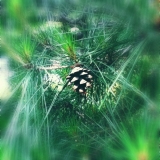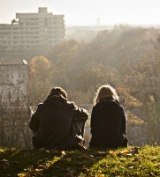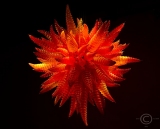- Forum
- General Discussion | Introductions | Off Topic Forum
- Photography General Discussion
- Camelopardalid meteor shower (never before seen) on May 23-24, 2014
Camelopardalid meteor shower (never before seen) on May 23-24, 2014
-
 Topic Author
Topic Author
- TaesunShim
- Newbie
- Nikon D610
- Followers: 2
- Posts: 6
-
Points:
0
Post #375602
-

- Luca
- The Lounger
-
- Nikon D7000
- Followers: 174
- Posts: 1020
-
Points:
7303
-
 Topic Author
Topic Author
- TaesunShim
- Newbie
- Nikon D610
- Followers: 2
- Posts: 6
-
Points:
0
Post #375608
-

- Alan Nunez
- Snapobsessed
-
- Nikon D3 & D2x
- Followers: 88
- Posts: 391
-
Points:
0
Post #375614
TaesunShim wrote: I have two lenses (they aren't the best out there, but they are still okay to use) and the maximum aperture it can reach is f/3.5. Would that be enough?
You should be OK if that is all you have. Make sure you have a very steady tripod and maybe some additional weight to hang on the tripod for additional stability. You will need a stopwatch as you may want to exposures beyond the settings of you camera. A cable release with a manual lock. Also it would be worth experimenting with the way your camera deals with long exposure and noise reduction before you head out on the shoot.
-
 Topic Author
Topic Author
- TaesunShim
- Newbie
- Nikon D610
- Followers: 2
- Posts: 6
-
Points:
0
Post #375617
-

- JeremyS
- Photography Hooked
-
- Nikon D3200 & Nikon D800
- Followers: 31
- Posts: 506
-
Points:
291
Post #375663
TaesunShim wrote: I know the "BULB" feature, and I know how to use a cable release. I just don't get any idea on how long my exposure should be for the best result....(trial and error wouldn't necessarily be an option because I am dealing with a meteor shower which won't last all night). If I have my exposure too long, I am worried that the movement of the Earth will move the stars from its first alignment and make a "semi-star trail" which, what I think, would look ugly. (A whole, 250 frame star trail would look great though)
I recently read an article (the one on how to take pictures of the milky way recently posted on the PT facebook page) that said that shooting at a maximum of 30 seconds is good, because anything more would typically record a star trail, another way is as you said, shooting multiple frames to try and catch as many meteors as you can but edit out some of the stars creating trails.
I have never done a star shoot, so all of my ideas are coming from articles and knowledge from the internet.
-

- garyrhook
- Oh Wise One
-
- Nikon D850, Nikon D750, Panasonic G7K
- Followers: 912
- Posts: 11103
-
Points:
67681
Post #375750
Takennnn wrote: I recently read an article (the one on how to take pictures of the milky way recently posted on the PT facebook page) that said that shooting at a maximum of 30 seconds is good, because anything more would typically record a star trail, another way is as you said, shooting multiple frames to try and catch as many meteors as you can but edit out some of the stars creating trails.
I have never done a star shoot, so all of my ideas are coming from articles and knowledge from the internet.
Nothing wrong with working from accurate articles. My understanding is also 30 seconds or less.
Multiple exposure won't work. Each one needs to be properly exposed, or you'll never record enough light to register the stars.
-
 Topic Author
Topic Author
- TaesunShim
- Newbie
- Nikon D610
- Followers: 2
- Posts: 6
-
Points:
0
Post #375759
Oh, and how do you "reply" to someone (where your post is below another post you are replying to)?
-

- garyrhook
- Oh Wise One
-
- Nikon D850, Nikon D750, Panasonic G7K
- Followers: 912
- Posts: 11103
-
Points:
67681
Post #375852
TaesunShim wrote: Are you recommending a shutter speed of 30 seconds or less? I think that might lead to an underexposed picture. Well, I do not know anything of low-light photography so... Maybe a higher ISO might work but it feels like in such dark conditions, using a very high ISO would create a lot of noise.
Oh, and how do you "reply" to someone (where your post is below another post you are replying to)?
There's a "quote" button in the bottom right corner of the post.
Yes, a shutter speed of 30 seconds or less. Yes, it's very dark. Yes, you have to increase your ISO, but it's amazing what happens when you combine the two. You will need to do some exploration on the interweb, or go out and experiement.
As for noise, you will also want to look at the "dark frame subtraction" technique.
-

- effron
- Newbie
- Followers: 1623
-
Points:
129640
Post #375857
www.photographyblogger.net/how-to-photograph-the-milky-way/
starcircleacademy.com/
Why so serious?
-
 Topic Author
Topic Author
- TaesunShim
- Newbie
- Nikon D610
- Followers: 2
- Posts: 6
-
Points:
0
Post #375895
garyrhook wrote:
TaesunShim wrote: Are you recommending a shutter speed of 30 seconds or less? I think that might lead to an underexposed picture. Well, I do not know anything of low-light photography so... Maybe a higher ISO might work but it feels like in such dark conditions, using a very high ISO would create a lot of noise.
Oh, and how do you "reply" to someone (where your post is below another post you are replying to)?
There's a "quote" button in the bottom right corner of the post.
Yes, a shutter speed of 30 seconds or less. Yes, it's very dark. Yes, you have to increase your ISO, but it's amazing what happens when you combine the two. You will need to do some exploration on the interweb, or go out and experiement.
As for noise, you will also want to look at the "dark frame subtraction" technique.
I've known about the "dark frame subtraction" technique for quite a time but never understood it. Is it where I would take a picture and take another (same settings) but with the lens cap on? What would I have to do after in Photoshop to minimize noise, and how does it work?
-

- John Landolfi
- Super User
-
- Nikon D3S, D7100, Sony RX10, Canon G11, F4s, F2sb, RetinaflexIV etc, etc
- Followers: 1205
- Posts: 21605
-
Points:
40394
Post #375906
TaesunShim wrote:
garyrhook wrote:
TaesunShim wrote: Are you recommending a shutter speed of 30 seconds or less? I think that might lead to an underexposed picture. Well, I do not know anything of low-light photography so... Maybe a higher ISO might work but it feels like in such dark conditions, using a very high ISO would create a lot of noise.
Oh, and how do you "reply" to someone (where your post is below another post you are replying to)?
There's a "quote" button in the bottom right corner of the post.
Yes, a shutter speed of 30 seconds or less. Yes, it's very dark. Yes, you have to increase your ISO, but it's amazing what happens when you combine the two. You will need to do some exploration on the interweb, or go out and experiement.
As for noise, you will also want to look at the "dark frame subtraction" technique.
I've known about the "dark frame subtraction" technique for quite a time but never understood it. Is it where I would take a picture and take another (same settings) but with the lens cap on? What would I have to do after in Photoshop to minimize noise, and how does it work?
- Forum
- General Discussion | Introductions | Off Topic Forum
- Photography General Discussion
- Camelopardalid meteor shower (never before seen) on May 23-24, 2014
Latest Reviews
The Fujifilm XT5 is a 40MP mirrorless camera capable of 6.2K video at 30p. With those specs, it’s an ideal choice for photographers needing a camera to pull double duty for imaging and video.
The Canon EOS R100 is an entry-level mirrorless camera introduced in 2023. But just because it’s an entry-level camera doesn’t mean it’s a bare-bones camera. Find out why in this review!
Nikon’s retro-looking Nikon Zfc is anything but retro. Under its classic body is a host of features and amenities that make it a worthwhile compact mirrorless camera for 2024.
The Canon EOS R50 is one of the newest R-system cameras from Canon. Is it worth your money? Find out all the details you need to know in this comprehensive review.
Forum Top Posters
-
1TCav 7 posts
-
2CharleyL 5 posts
-
3Sawyer 5 posts
-
4db3348 3 posts
-
5Scotty 3 posts
-
6Tristan R 3 posts
-
7Hassner 3 posts
-
8AstralArti... 3 posts
-
9Randy Shaw 3 posts
-
10Finn 2 posts
Latest Articles
The best beginner camera isn’t the same for everyone. That means having choice is of the utmost importance. In this guide, explore five excellent beginner camera options for 2024 and beyond.
Child portrait photography is a unique undertaking requiring special skills and talents to get the best results. Start mastering this photography niche with these essential tips!
The Fujifilm XT5 is a 40MP mirrorless camera capable of 6.2K video at 30p. With those specs, it’s an ideal choice for photographers needing a camera to pull double duty for imaging and video.
Using leading lines in photography helps improve the composition by drawing viewers in and leading their eye from the foreground to the background. Explore some fine examples of this in this guide!
The Insta360 has one of the best lineups of action cams and 360-degree cameras. With these Insta360 accessories, you can elevate your photography and videography game!
Creating impactful photos of landscapes depends on many factors, not the least of which is your talent behind the lens. This guide explores other elements required for the best product.
The Canon EOS R100 is an entry-level mirrorless camera introduced in 2023. But just because it’s an entry-level camera doesn’t mean it’s a bare-bones camera. Find out why in this review!
Are you ready to upgrade your camera? Before buying new, you might consider the value of purchasing used gear to save money.
















